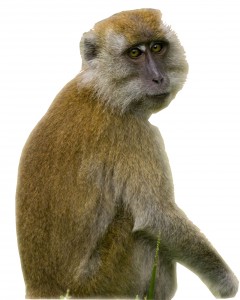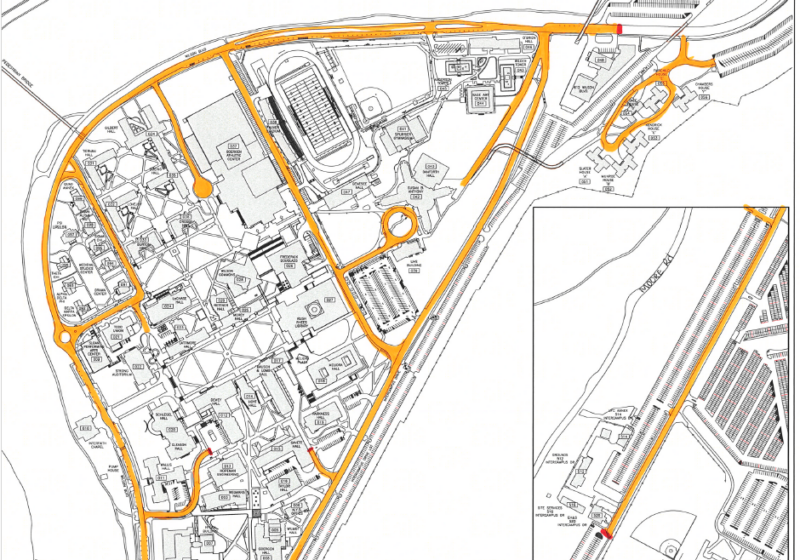On Oct. 1, People for the Ethical Treatment of Animals filed an urgent letter to UR President Joel Seligman concerning the purchase of monkeys for research on campus. The animals were purchased from Florida-based Primate Products, Inc. (PPI), a company under investigation for animal abuse.
Internal documents from the company show that UR purchased four monkeys of Indian origin as recently as July.
“As long as UR gives money to Primate Products, it plays a part in the suffering of these animals,” PETA Vice President of Laboratory Investigations Kathy Guillermo said in a press release. “PETA is asking all the organizations that deal with Primate Products not to give one more dime to the company.”
PPI is currently under investigation by the U.S. Department of Agriculture with regard to violations of federal animal laws. Florida’s Nova Southeastern University has already cut off its relationship with the company.
“We are committed to the humane and responsible treatment of animals used in research,” Tom Rickey, associate director for Research Communications at URMC, said. “We are aware of the serious allegations against PPI and will await the findings of the investigation by the U.S. Department of Agriculture before making any decisions regarding our relationship with the company. In the past, we have had very limited dealings with PPI. If the current investigation causes USDA to pull PPI’s dealer license, we would no longer consider them to be a UR-approved vendor.”
Prior to this summer, UR’s relationship with PPI was for the purchasing of equipment and toys for animal research. This was the first time that UR has purchased animals from the vendor.
Citing security concerns for both animals and researchers, UR officials were unable to confirm the current number of animals involved in research or provide photographs of on-going research.
According to the official USDA report filed in Nov. 2009, UR reported 85 monkeys in research experiments. Thirty of these had been categorized as being used in experiments where the animals would suffer pain or discomfort and were to be be treated with the proper anesthetics for the accompanying pain.
Recent research
PETA cited other animal research concerns at UR, including two specific experiments in which monkeys were caused possible harm.
One study was co-authored by professor of neurology and neurobiology and anatomy Marc Schieber M.D., Ph.D. In the study, the monkeys had a head post surgically placed on their skulls and a search coil implanted in one eye to help take readings of line-of-sight. The monkeys had been restrained in primate chairs that limited their body movement, though they were allowed to reach for food pellets.
In the second study, authored by professor of neurobiology and anatomy Tatiana Pasternak, M.D., the two animals were restricted from drinking water for 20 hours leading up to the daily trials, where water was then provided in the testing procedure.
To record and monitor brain activity during the trials, the monkeys had holes cut into their skulls and had electrodes lowered into the brain.
Despite the surgical intensity of the experiments, the implications for medical research can be life-changing.
In the case of Schieber’s research, his work with monkeys has helped shed light on how the human brain works with neurological pathways. Previously published research shows how the brain can bypass the traditional nerves pathway and use alternative routes to control movement, opening up a new world of possibilities for patients who are working to regain functional body movement after a brain injury.
Another UR researcher, Associate Professor in the Department of Ophthalmology Krystel Huxlin, also has given patients with formerly bleak diagnoses a more hopeful future. Her work with monkeys has led to a computer-based vision training system. The system has been successful in post-stroke patients who have lost their vision. Through the help of Huxlin’s research and her work with monkeys, in particular, patients who were unable to go on with everyday activities — such as driving or shopping — were able to regain a more normalized sense of vision.
In addition, Dean of the College Faculty Peter Lennie cited animal research as “crucial” to helping treat Parkinson’s Disease, the effects of a stroke or of spinal cord injuries.
“Sometimes, important questions about medicine and science cannot be answered without animal research,” Lennie said. “Our researchers who use animals are investigating fundamental problems that can be answered in no other way. For example, one cannot understand how the brain works, and the consequences of disease or injury, without directly studying the living brain. If scientists did not use animals in their research, they would not be able to solve some of the most pressing problems facing humankind today.”
University discussion on ethics of animal testing
Animal research within universities is nothing new and neither is the debate it brings. Animal research has become common practice, especially at institutions focused on the advancement of medicine. However, in light of the recent PETA request, student opinion on where the line should be drawn for animal testing is quite mixed, with students falling on both sides of the ethical debate.
“My base instinct is to be against it, just on a human level, but when I think about it, I start leaning toward it, just because it’s beneficiary,” sophomore Greg Bocko said.
Others were quick to stand up for animal rights, no matter the animal that was involved in the research.
“Personally, I think it’s wrong,” senior Jay Kim said. “How do you differentiate which animals deserve to be experimented on and which ones don’t?”
“People shouldn’t judge, because 50 years from now there could be tremendous medical advancement because of what [they’re] doing today,” a student, who wished to remain anonymous due to her job in animal research, said. “People shouldn’t be against animal research unless they’re not going to use any medicine at all that was tested on animals.”
The type of animal used in research does seem to matter to at least some students. When specifically asked about the use of monkeys in research, sophomore Kate Bredbenner wasn’t quite sold.
“I don’t know, they kind of look like us, it’s kind of creepy,” Bredbenner said.
For others, no matter the situation, animal research is just too close to science fiction.
“Hasn’t anyone seen ‘28 Days Later’?” sophomore Alanna Scheinerman said.
Clark is a member of
the class of 2012.
Additional reporting by Jason Silverstein, Class of 2013.
Update: Paragraph 8 was clarified to avoid confusion that the pain was still present after the administering of anesthesia, where the anesthesia is actually used to prevent the pain of the procedures.






